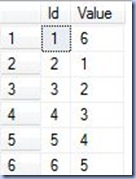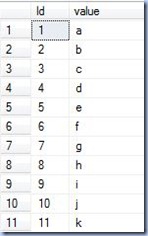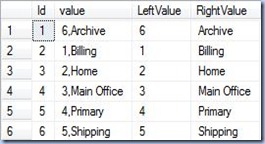-- example 1 - simple query SELECT * FROM Person.Address WHERE AddressID = 1 -- example 2 - query encapsulated in a string: EXEC ('SELECT * FROM Person.Address WHERE AddressID = 1') -- example 3 - query stored into a string variable EXEC ('SELECT * FROM Person.Address WHERE AddressID = 1')
Supposing that the AddressID is considered as parameter we can write:
-- example 4 - static query DECLARE @AddressID int SET @AddressID = 1 SELECT * FROM Person.Address WHERE AddressID = @AddressID -- example 5 - dynamic query DECLARE @sql varchar(100) DECLARE @AddressID int SET @AddressID = 1 SET @sql = 'SELECT * FROM Person.Address WHERE AddressID = ' + CAST(@AddressID as varchar (10)) EXEC (@sql)
Until here there is no important conceptual difference. What if is needed to pass multiple AddressIDs? We can create a parameter for which expected values, though that’s not a reasonable solution as the number of values can vary. A more elegant solution would be to create a list of values and provided as a string parameter and then concatenate the original query and the string parameter like below. We just need to accommodate the length of the string variable to the expected size of the list of value.
-- example 6 (dynamic query) DECLARE @sql varchar(100) DECLARE @AddressIDs varchar(50) -- supposed parameter SET @AddressIDs = '1, 2, 4, 5, 6, 10' SET @sql = 'SELECT * FROM Person.Address WHERE AddressID IN (' + @AddressIDs + ')' EXEC (@sql)
There is actually a third solution. As in the previous post on list of values has been introduced the dbo.StringToTable function, the function can be used thus to transform the list in a table:
-- example 7 (list of values) DECLARE @AddressIDs varchar(50) -- supposed parameter SET @AddressIDs = '1,2,4,5,6,10' SELECT * FROM Person.Address WHERE AddressID IN ( SELECT value FROM dbo.StringToTable(@AddressIDs, ','))
In the same post was constructed the DoubleList list of values which can be used in a dynamic query in bulk inserts or table-value constructors. The list needs to be slightly modified by replacing the single quote with two single quotes in order to accommodate value’s storage in a string. Considering that there are no integrity constraints on the targeted table, he query for bulk insert can be written as follows:
-- example 8 (list of values & bulk insert) DECLARE @sql varchar(200) DECLARE @AddressTypes varchar(150) SET @AddressTypes = '(6,''Archive''), (1,''Billing''), (2,''Home''), (3,''Main Office''), (4,''Primary''), (5,''Shipping'')' SET @sql = 'INSERT Person.AddressType (AddressTypeID, Name) VALUES ' + @AddressTypes EXEC (@sql)
The same technique can be used with a table-value constructor:
-- example 9 (list of values & table-value constructor) DECLARE @sql varchar(400) DECLARE @AddressTypes varchar(150) SET @AddressTypes = '(6,''Archive''), (1,''Billing''), (2,''Home''), (3,''Main Office''), (4,''Primary''), (5,''Shipping'')' SET @sql = 'SELECT VA.AddressID, VA.AddressTypeID, AT.NAME FROM Purchasing.VendorAddress VA JOIN ( VALUES ' + @AddressTypes + ') AS AT(AddressTypeID, Name) ON VA.AddressTypeID = AT.AddressTypeID' EXEC (@sql)
The above examples are basic, in daily problems such queries can involve multiple parameters and operations. In addition, in the last examples the concatenation step was left out.




